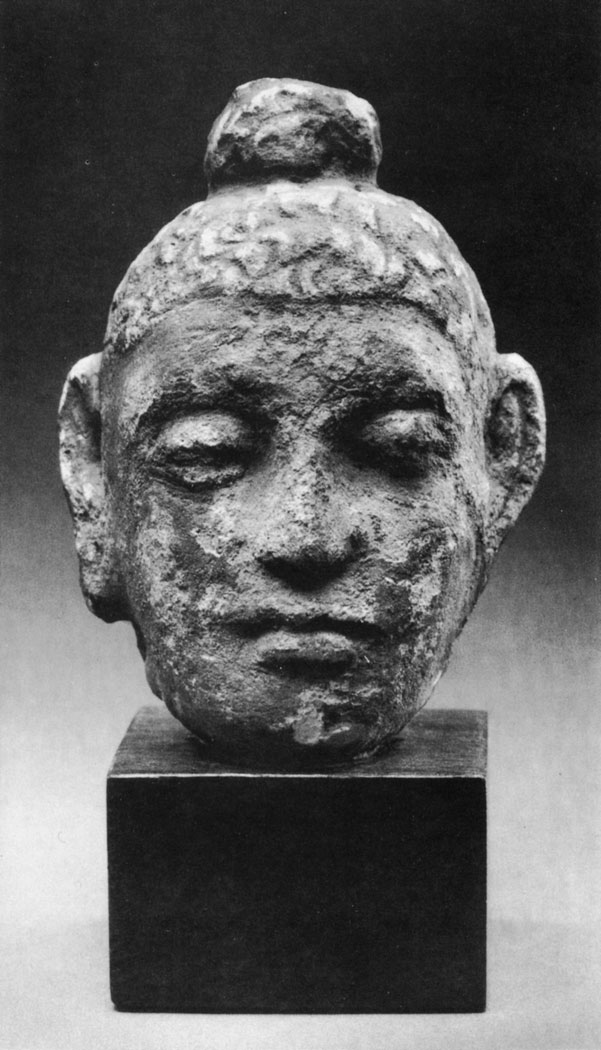
Gandhara

The Buddha's head (fragment of a statue?)
Gandhara. 3rd or 4th century
Carved stucco.
Height 8.5 cm. Inv. No. 24734 КП
Received in 1975 as a gift from the Gallery of the Indus Civilization, Karachi. First publication.
Gandhara sculpture possessed a remarkably original style. The name comes from the region in North-West India known in ancient times as Gandhara (now part of Pakistan). The golden age of
Gandhara style coincides with the period of the Kushan dynasty (the first centuries AD). The repertory of subjects used by Gandhara sculptors was dominated by religious motifs and characters: representations of the Buddha and other deities, as well as Buddhists from the local aristocracy, figure prominently among the surviving examples. Gandhara sculptors were the first to produce an anthropomorphic image of the Buddha which had previously been represented only symbolically.
The main purport of Gandhara art was the creation of an ideal human image whose essence is beauty and tranquillity, and spiritual, rather than physical, power. This ideal was personified by the image of the Buddha absorbed in meditation, with half-closed eyes and a thin face lit up by an enigmatic smile-a deeply humane and spiritual image. Some Gandhara sculptures reveal a marked Hellenistic influence, but even though some features are borrowed, they go far beyond a merely mechanical imitation.
The earliest Gandhara sculptures were made of stone, but later the sculptors used clay or stucco and often painted their sculptures.
|
ПОИСК:
|
© MUSEUMS.ARTYX.RU, 2001-2021
При использовании материалов сайта активная ссылка обязательна:
http://museums.artyx.ru/ 'Музеи мира'
При использовании материалов сайта активная ссылка обязательна:
http://museums.artyx.ru/ 'Музеи мира'